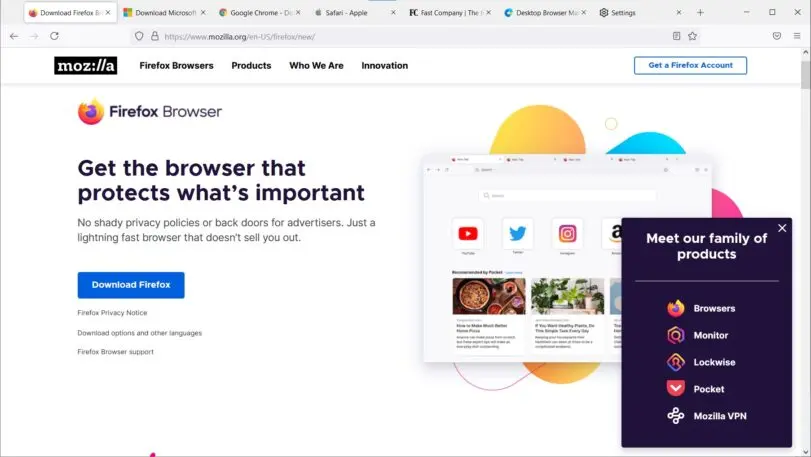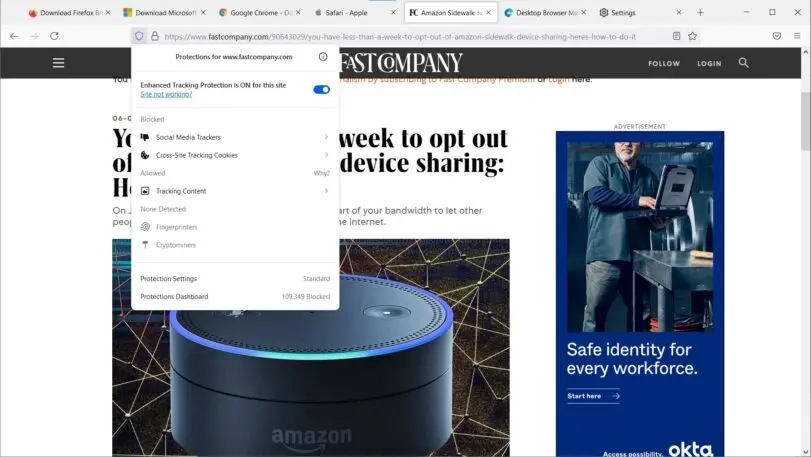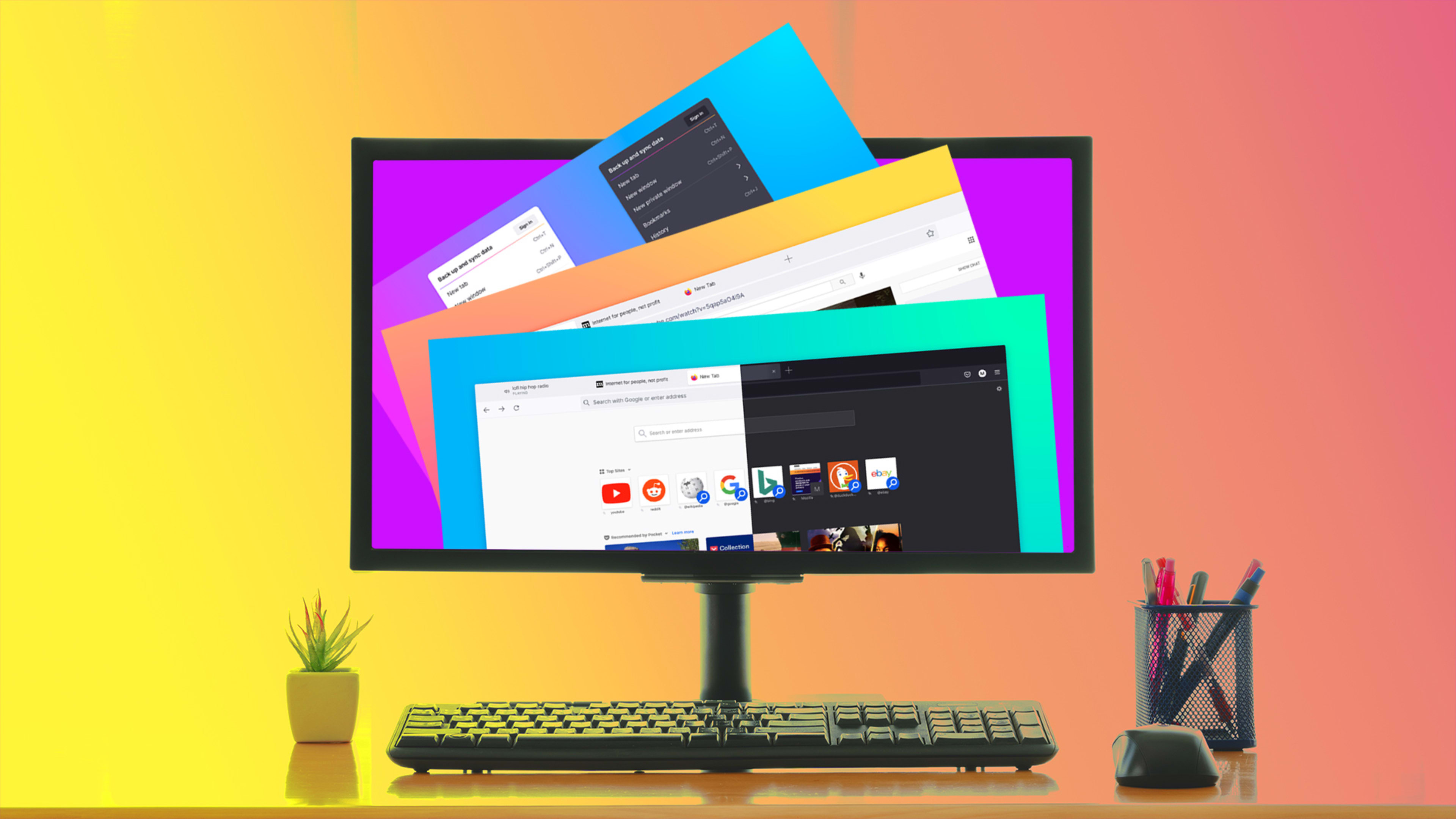With a major redesign, Mozilla Firefox is back but no longer in black.
The most obvious change in Firefox 89, which arrived on Tuesday morning, is the toolbar atop the browser: It now comes in a shade of pale gray instead of black, so it fits in much better with other Mac or Windows apps.
Below that, the new release of the open-source browser—which has also been updated for Linux, with a corresponding iOS and iPadOS update—shows considerable pruning of its interface. The address bar has lost the traditional home button and condensed the raft of buttons at the top right, while the menu available there is no longer festooned with the icons that made Firefox look even more like a stranger on a Mac or PC.

A June 1 blog post calls this “a modern new look designed to streamline and calm things down.” But the face-lift also represents a recognition that this privacy-focused browser continues to get squeezed between Google’s dominant Chrome, Apple’s equally privacy-minded Safari, and Microsoft’s reinvented Edge.
So while past Firefox updates have emphasized its protection against online tracking—it blocks third-party ad trackers and the Facebook widgets that let that firm follow us across the web, displays a privacy report card for each page, and even encrypts your domain lookups—this one sells a less-is-more design.

That was the right call for Firefox, a browser that broke Microsoft Internet Explorer’s lock on the market by offering tools Microsoft wouldn’t—starting with pop-up blocking and tabbed browsing—but then grew to suffer from a certain amount of feature-itis.
For example, the previous release featured two rectangular toolbar buttons, one with mostly vertical lines and the other with a mix of horizontal and vertical lines. The former, Library, provides access to your bookmarks and history, while the latter, Sidebar, offers a different way to view your bookmarks and history while adding the ability to see tabs synced from other copies of Firefox.
Updating my Mac and Windows installations of Firefox expunged the Sidebar button and with it the chance that I’d once again confuse it for the Library button. You can undo that in the Customize Toolbar screen or choose the latest Firefox defaults—which remove the Library button as well but add a button for Mozilla’s Pocket page-saving service.
That bit of in-browser promotion speaks to the efforts of Firefox’s parent organization to wean itself off of relying on Google paying to make its search the default in Firefox (yes, just as is the case in Apple’s Safari). Mozilla has both nudged its users toward third-party services and pushed add-ons of its own that now include a paid VPN service.
But the browser that liberated a generation of web users from the mediocre near-monopoly of Microsoft Internet Explorer has seen a steady decline in usage in recent years. StatCounter’s measurements show Firefox’s desktop share in the U.S. dwindling from about 25% a decade ago to just under 6% today.
During the same time, Chrome has increased its market share to just above 61%, with Apple’s Safari in second place at almost 17.5%. And as Firefox has fallen, Microsoft’s Edge has risen and now stands at 11%. (Other browser-market measurements, such as those of W3Counter, show similar trends.)
Increasingly, Firefox’s problem looks to be not Chrome but its new competition to be the anti-Chrome.
First Microsoft rebuilt Edge on the Chromium open-source code of Chrome itself—gaining Google’s excellent groundwork in security, ensuring Edge compatibility with sites built to favor Chrome, and adding compatibility with a vast library of Chrome extensions.
Edge’s developers have also matched many of Firefox’s privacy features and put in serious effort to surpass the competition in other ways.
For example, Edge’s optional vertical tab menu represents an ingenious, space-saving rethinking of tabbed browsing. Its automatic coupon finder addresses our collective am-I-leaving-money-on-the-table anxiety, its PDF annotation provides tools unmatched by the competition, and its “Immersive Reader” mode offers a pleasantly stripped-down view of visually noisy pages that isn’t quite as spartan as Firefox’s equivalent reader mode.
And like Firefox, Edge comes in versions for the four biggest platforms: MacOS, Windows, Android, and iOS.
For privacy-focused users and fans of an independent web, Firefox remains the strongest choice. (Disclosure: It remains my default in MacOS and Windows.) But as Mozilla has had to endure multiple layoff rounds while Microsoft can bring… Microsoft-esque resources to the browser market, you have to wonder how long that will last.
Recognize your brand’s excellence by applying to this year’s Brands That Matter Awards before the early-rate deadline, May 3.
